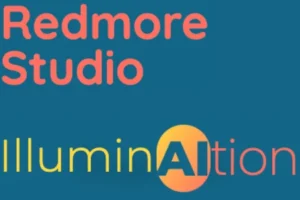Interoperability Matters
Look, I’ve been in tech long enough to see generations of formats come and go. Remember when floppy disks were floppy?When they were disks? When they…existed? I’ve got a 2TB memory stick on a cord around my neck right now (so I don’t, uh, lose it). First off, compared to the 360KB 5 1/4″ floppy – I’m carrying 5,555,556 of those disks around my neck. Which, at about 50g/disk, is 277.78 metric tons. Second, next time you hold a memory stick in your hand, just pause for a second – if you have a 2TB drive, you are holding in your hand, right at this very moment, over 2 trillion individual structures, objects that were manufactured. Did you every think that you’d be holding 2 trillion objects? I didn’t.
Ok, well, I’m glad we took that little trip down memory lane (heeeee!), but my point was around formats and interoperability. Storage formats have changed as physical possibilities have changed. Network formats have undergone a similar evolution, converging on a TCP/IP stack. Then there’s the formats we use to communicate with each other. When I write a document, I put headers in place. I use bold and italic to emphasize different points in different ways, bullets and numbers to define different sorts of lists. And I’ve generally worked in WYSIWYG editors, and used either my mouse or appllication-specific keyboard commands to define when something is a list, etc.
Here’s the thing… What if I want to write a formatted text document in one application and then open it in another? What if an AI chatbot writes a formatted document for you – how do you pull that into another editor (like, say, Claude to MSWord) and work with it?
Enter Markdown
In 2004, John Gruber (with Aaron Swartz as his ‘sounding board’) created something called Markdown. I’m going to quote a bit from Gruber’s blog
Markdown’s syntax is intended for one purpose: to be used as a format for writing for the web.
Very cool. But, like, we have words already. Words are a pretty good format for writing for the web. In fact, in case you didn’t notice, we’re using words right now.
Words.
But what if you want to make the words do this ? And you want to be able to do that in such a way that it is both easy to do and easy to implement – thus having the highest chance of solid interoperability.
Well, it turns out that you need some way to specify that. Before the invention of Markdown, we’d use HTML – which is reasonably clear – if you’re an HTML parser. Back in those days, it was not super easy to handle. And so, Mr. Gruber and his (apparently) trusty sidekick Aaron Swartz.
Back to our story.
They saw this need. Or, rather, they saw that they couldn’t see it. And then they imagined it.
In a way, you could say that Markdown was born of a hallucination. Let’s join them in this fever dream.
What is Markdown?
Back to the base definition: Markdown is a lightweight markup language created by John Gruber (and Aaron Swartz in some apparently mysterious role) back in 2004. It uses plain text formatting syntax that converts to HTML, making it easy to create highly interoperablee formatted documents without complex software. io
First is the syntax, and then next is how they’d be rendered. To show the formatting, I’m using the \ character.
**This text is bold** *This text is italic* [This is a link](http://redmorestudio.com)
This text is bold This text is italic This is a link
When processed, this simple text transforms into properly formatted content with (at the very least ) headings, bold text, italics, and links. It’s like having a universal translator that works across practically every modern digital platform.
The Different Flavors of Markdown
Markdown is intended to be as easy-to-read and easy-to-write as is feasible.
Readability, however, is emphasized above all else. A Markdown-formatted document should be publishable as-is, as plain text, without looking like it’s been marked up with tags or formatting instruction.
Obviously there will be something, but way less something than if you’re dealing with an HTML document.
One thing you should know is that Markdown isn’t perfectly standardized. As it gained popularity, different “flavors” or dialects emerged. Generally speaking, the extended variants will add particular functionality that the author deems useful for a paricular task – we’ll get into that in a second.
But, even for the most basic stuff, there are a couple of variants. I wouldn’t get too chuffed about that – at the level you and I are working at, they’re going to be the same.
The two most prevalent flavors are:
CommonMark
This is the attempt to standardize Markdown across platforms. Many major platforms like GitHub, Reddit, and Stack Overflow have adopted or aligned with CommonMark.
Example of CommonMark’s approach to tables:
| This | is|
|——-|——|
| a | table |
| this | is |
|---|---|
| a | table |
GitHub Flavored Markdown (GFM)
GFM extends CommonMark with additional features particularly useful for technical documentation. It adds syntax for tables, task lists, strikethrough, and autolinks.
Example of GFM task lists:
- [x] Complete the project proposal
- [ ] Schedule team meeting
- [ ] Review client feedback
In practice, you’ll find that about 90% of basic Markdown syntax works consistently across platforms. It’s only when you get into fancy formatting that you might need to adapt.
Markdown as the Lingua Franca
Here we are with this syntax that was intended for power(ish)-users to be able to write out their formatted documents. And it works pretty well for that purpose.
But there’s a second purpose, one that evolved and was really an unintended consequence. This, in my opinion, is the big one and is really what we’ve been building up to all of this time. And that is interoperability. Markdown defines a lowest common denominator for formatting.
Formatting helps define meaning! It is the difference between saying something and saying something.
There are other formatting standards available today, some that are open to use (like Microsoft’s XML format that they use for their Office apps). But, it is by far the easiest. It has clarity and simplicity. There is power in choosing not to pursue every possible feature, This brings developers to the party because they know it’s not going to be constantly changing under their feet.
Markdown allows systems to interoperate with formatting and thus interoperate with consistent expression of meaning.
The “CommonMark” format is feature complete and has been stable for a while. This is important as it gives any given software projectr a clear syntax they can implement and be pretty sure that it’s going to work with any system that supports markdown.
Given the nature of markdown, it is easiy extendable – and then if you know the syntax, you can generate a text document that completely describes what the markdown renderer is going to generate.
Because of its clarity, simplicity, application-specific extendability – Markdown has become the Lingua Franca of inter-application formatted text-based communication. I am going to have trouble expressing just how big of a deal this is – we suddenly have this protocol layer of inter-process communication that we can read. I mean, I used to be able to basically read packet dumps, but that was after a whole lot of time sitting in front of a network analyzer with a broken-spined, dog-eared, scribbled on O’Reilly TCP/IP “animal” book (crab – which I always found funny) sitting in a pile of DrPepper cans.
Not so much now. I’m lucky to be able to read my email. And I’m way smarter than an LLM when it comes to interpreting meaning.
Now we’re all chatting with LLM text-based GenAI systems. And they’re all chatting with each other – in human languages… Claude speaks Markdown fluently. So does ChatGPT. So does Gemini and pretty much every other AI assistant. When I send a message to Claude with Markdown formatting, it understands exactly what I mean. When Claude gives me back Markdown, I can copy it directly into my notes app, my blog platform, or my documentation system without losing any formatting.
No more copy-paste nightmares where you lose all your formatting. No more fighting with Word documents that break when shared between platforms. Just clean, portable text that works everywhere.
Many tools now export and import Markdown, including:
- Perplexity AI (for research outputs)
- Notion and other productivity tools
- GitHub and GitLab
- Obsidian and other note-taking apps
- Slack and Discord
- Most modern content management systems
- Email clients like Hey and Superhuman
- AI chatbots like Claude, ChatGPT, and Gemini
This interoperability means you can write something once and use it practically everywhere without reformatting. I draft almost everything in Markdown now because I know it’ll work smoothly across my entire workflow. (Ok, I cheat – I use MSWord with the Writeage plugin as a WYSIWYG editor – I can paste Markdown into Word and copy it out – formatting stays complete. I have to be a little careful not to get too crazy with the styles, but other than that, it works fine.)
For example, I might:
- Draft a document in Notion
- Ask Claude to review and improve it
- Integrate Claude’s suggestions back into my draft
- Share it on Slack with my (imaginary) team
- Finally publish it to our company blog
All without fighting with formatting or converting between file types. It just works.
Every major AI assistant speaks Markdown natively. When I ask Claude to create a table comparing pricing tiers for a new product, it delivers a beautifully formatted Markdown table that I can copy directly into my documentation. When I need ChatGPT to outline a project plan, it gives me nested Markdown lists that translate perfectly to any project management tool.
The AI tools themselves output Markdown because it’s:
- Universal and portable
- Simple to parse
- Human-readable even in its raw form
- Compatible with version control systems
This isn’t just a temporary trend—it’s the new standard for text interchange in the age of AI. It’s the new standard for data interchange in the age of AI. One might even go beyond that and say that it is the new standard for meaning interchange.
Markdown Tools Worth Exploring
When you’re ready to integrate Markdown into your workflow, these tools make the transition seamless:
One Markdown for Mac is an elegant editor that provides a clean interface for writing and previewing your Markdown documents simultaneously. It offers features like syntax highlighting, document outline navigation, and custom styling options. It’s what I used to craft everything but the very final edits (I did those right inside of the WordPress Gutenberg block editor. I required more finesse in how I expressed formatting.)
Writage is a powerful plugin for Microsoft Word that allows you to import and export Markdown directly. This bridges the gap between traditional word processing and Markdown, making it accessible even to colleagues who prefer familiar tools.
Imagine drafting in Markdown’s clean, distraction-free environment, then importing into Word for final touches or collaboration with team members who aren’t Markdown-savvy yet. It’s the best of both worlds.
Markmap
Markmap transforms Markdown documents into interactive mind maps—perfect for visualizing project plans or organizational structures. I’ll put a pretty picture here in the final version, but just imagine your bullet-point meeting notes instantly converted into a visual mind map.
This is the markdown that defines the following mindmap
### Mermaid
Many Markdown implementations now support [Mermaid](https://mermaid-js.github.io/), which lets you create diagrams using text descriptions:
graph TD A[Start] –> B{Is it working?} B –>|Yes| C[Great!] B –>|No| D[Debug] D –> B
“`
This Markdown code renders as an actual flowchart diagram—no separate diagramming tool required. It’s absolutely magical for technical documentation.
Getting Started with Markdown
If you’re ready to join the Markdown revolution (and you absolutely should), here’s how to start:
Just try it: The syntax is so intuitive that you can learn the basics in about 10 minutes.
Use a dedicated editor: Try Obsidian, Typora, or VS Code with Markdown extensions for instant feedback as you write.
- Start with these elements:
# Headings(more # symbols mean smaller headings)**Bold text**and*italic text*-or*for bullet lists1.for numbered lists[Links](http://example.com)
- Copy Markdown from AI assistants: Ask Claude or ChatGPT to create a formatted document, then study the Markdown they provide.
Key Takeaways
- Markdown is a standard protocol for conversation between humans and AI, and between AI’s themselves
- It provides seamless interoperability across dozens of software platforms
- Different flavors exist but share common core syntax
- Every major AI assistant speaks Markdown natively
- LLMs and GenAI tools, Agents and Agentic Workflows – are all using Markdown as a data interchange format – where that “data” is human-understandable content
- Tools like One Markdown and Writage make adoption painless
- It’s particularly valuable for content that needs to be shared across systems
Like keyboard shortcuts, there’s a small learning curve with Markdown, but the return on investment is enormous. In a digital world increasingly mediated by AI assistants, Markdown is becoming the Lingua Franca of formatted text.
Get comfortable with it. It’s not hard, and it will make it easier for you to be a deeper part of the conversation.



